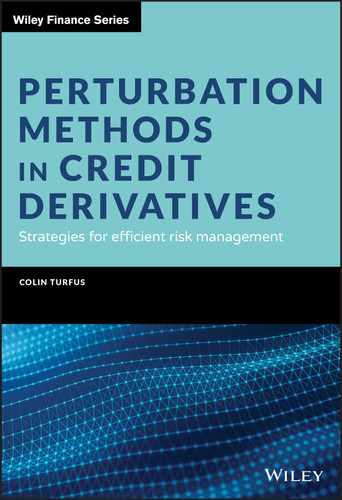Stress-test financial models and price credit instruments with confidence and efficiency using the perturbation approach taught in this expert volume Perturbation Methods in Credit Derivatives: Strategies for Efficient Risk Management offers an incisive examination of a new approach to pricing credit-contingent financial instruments. Author and experienced financial engineer Dr. Colin Turfus has created an approach that allows model validators to perform rapid benchmarking of risk and pricing models while making the most efficient use possible of computing resources. The book provides innumerable benefits to a wide range of quantitative financial experts attempting to comply with increasingly burdensome regulatory stress-testing requirements, including: The methods comprehensively taught in Perturbation Methods in Credit Derivatives also apply to CVA/DVA calculations and contingent credit default swap pricing.
Table of Contents
- Cover
- Title Page
- Copyright
- Preface
- Acknowledgments
- Acronyms
- CHAPTER 1: Why Perturbation Methods?
- CHAPTER 2: Some Representative Case Studies
- CHAPTER 3: The Mathematical Foundations
- CHAPTER 4: Hull–White Short‐Rate Model
- CHAPTER 5: Black–Karasinski Short‐Rate Model
- CHAPTER 6: Extension to Multi‐Factor Modelling
- CHAPTER 7: Rates‐Equity Hybrid Modelling
- CHAPTER 8: Rates‐Credit Hybrid Modelling
- CHAPTER 9: Credit‐Equity Hybrid Modelling
- CHAPTER 10: Credit‐FX Hybrid Modelling
- CHAPTER 11: Multi‐Currency Modelling
- CHAPTER 12: Rates‐Credit‐FX Hybrid Modelling
- CHAPTER 13: Risk‐Free Rates
- CHAPTER 14: Multi‐Curve Framework
- CHAPTER 15: Scenario Generation
- CHAPTER 16: Model Risk Management Strategies
- CHAPTER 17: Machine Learning
- Bibliography
- Index
- End User License Agreement
